You think the perspective is controlled by focal length? Well, I was thinking like you when I first started out, and I’m trompais. Let’s take apart this very common misconception.
Now, logically, you have to throttle. Since they explained the difference between a wide-angle and a telephoto lens, do you think that the former… accents the prospects and the second the cup. Except that we forget another element too easily: the wide-angle tends to make you bring closer together of your subject, and the telephoto lens to you in remove. So it’s not only the focal length that changes, but also the distance from you. Let’s decipher together the effects of these two variables on your images.
Pin this article on Pinterest for future reference!
Why should you read this article?
The perspectiveThe relationship between the sizes of different image elements at different distances can considerably change a cliché.
And it’s important to understand how act on this element for better check the rendering of your images. Are you interested in making your friends look very tall or on the contrary very small next to a mountain? Well, if you thought it was just a matter of focal length, you should keep going. read 🙂
Let’s change the focal length
As usual, let’s experiment to better understand. On the 3 following images, I have placed Groot (the little tree) and Axolot (all pink) at the equal distance from the background.
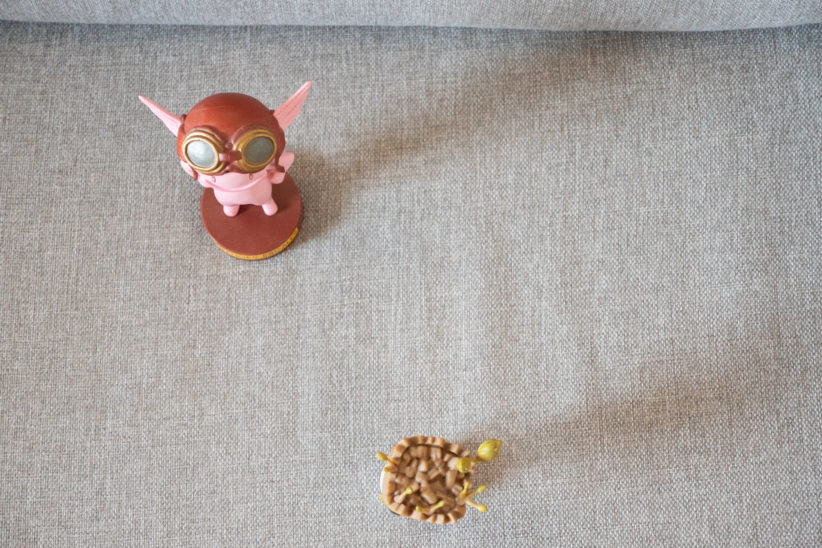
I don’t have unmoved my camera (placed on a tripod), and I have not modified none setting. The first image is taken at 35mm (on mic 4/3)the second to 25mmand the third to 12mm.
But like changing the focal length also changes the framework (which is narrower at 35mm than at 12, we agree), I have reframed images taken at 25 and 12mm so that they have the same frame. In this way, we will better see the effect of the focal length on perspective.
(Cropping inevitably deteriorates the image quality, but it is enough to see the size of the elements in relation to each other).
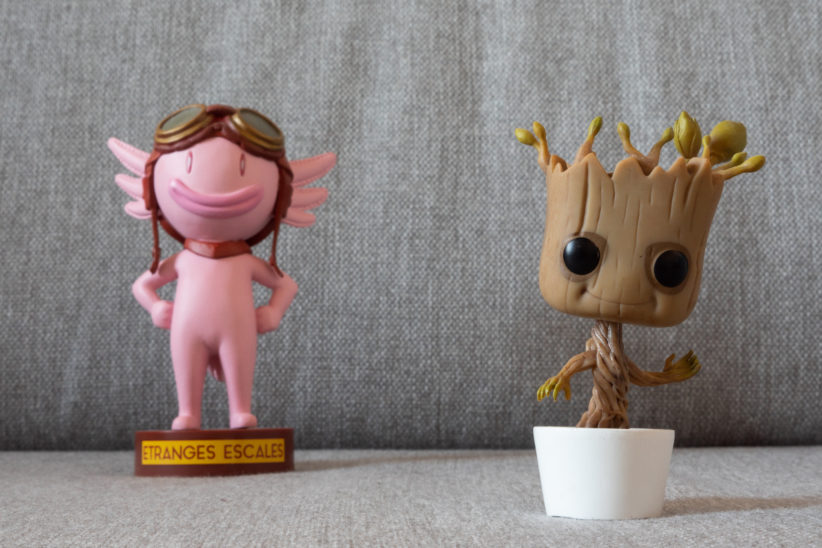
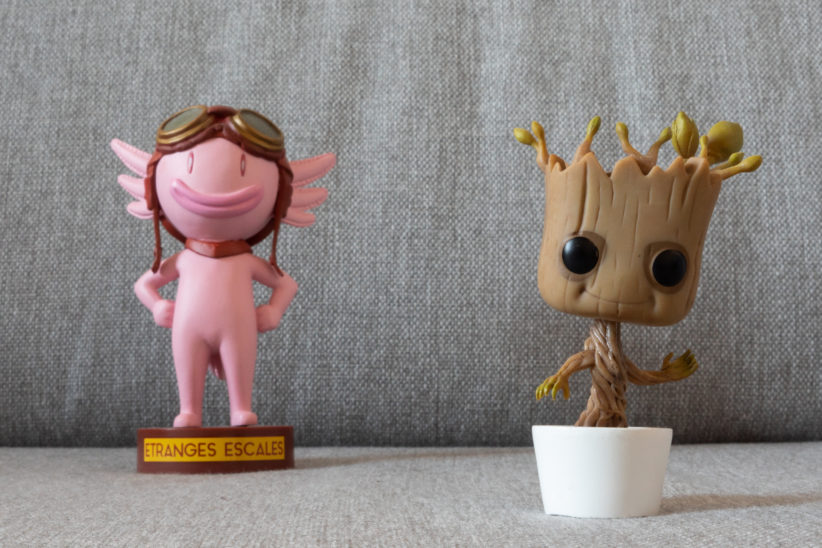
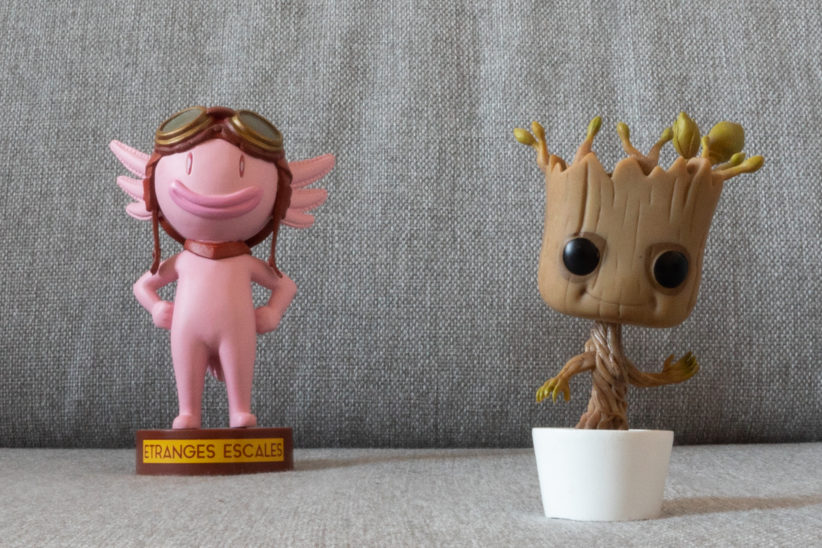
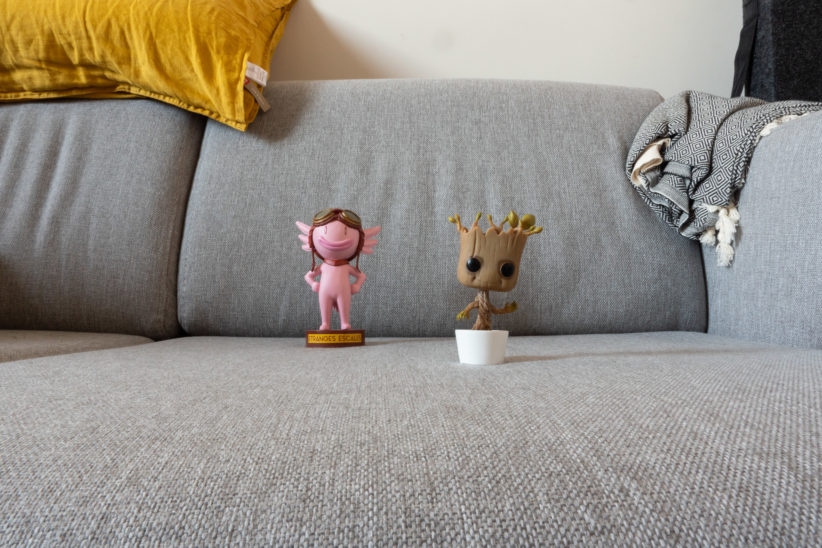
As you can see, there’s no no change in perspective The size of one figure in relation to the other has not not changed.
You’re getting a little full of yourself, aren’t you? It had the same effect on me when I discovered it thanks to a comment on the blog 😉 (by the way, thanks for giving me an idea for an article ! :D)
Let’s change the distance to the subject
Let’s keep it at 12mm, but Let’s get closer to the camera to get the same frame as the zoomed image. (i.e. Groot takes up about the same place in the picture) :
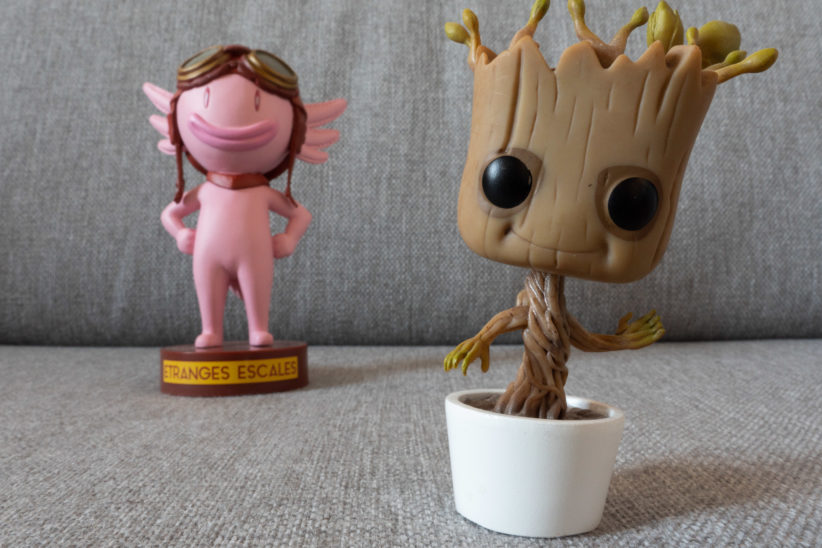
Do you see the difference gigantic in perspective? Groot looks bigger than Axolot, when in reality he’s 2/3 of his size!
So it’s clear that it’s not the focal length that influences directly perspective, but rather the distance in relation to the subject.
What about the relationship between the two?
You’re going to tell me:
Yes, but with a shorter focal length, you tend to get closer, and with a longer focal length you tend to get further away, at least if you want to keep the same frame.
Indeed: the focal length influences indirectly the perspective in the image, because it gives you force to get more or less close to your subject. The usual hypothesis “short focal length = more perspective” is thus relatively valid.
But let’s turn the problem upside down: if you “are”Zoom in with your feet.”you change the perspective of your image, and it is necessary to beware. Especially with fixed focal lengths where that’s all you’re going to do, you have to view these changes perspective to see if they don’t have an effect. disastrous on your image (I’m thinking of the portrait for example).
I still love fixed focal lengths of course, but if you look at it, there are different focal lengths. adapted to different types of images if you don’t want to get too close to your subject. For example, if you.., 50mm (in 24×36 equivalent, so about 35mm on APS-C or 25mm on 4/3 microphones) will probably be more suitable for portrait photography. full-length or American style than for portraiture. tightwhere 85 see 100mm allow to move further away from the subject in order to less force the perspectives, and thus less deform his face (typical case: make a big nose :P)
There, I hope you will have a better understanding of how the perspective works and that you can take care of it and the check when you make your choices of composition.
I encourage you to post a comment for add something to this article or for further a point that remains unclear to you 😉 Also think about subscribing to the newsletter if you haven’t already done so to receive my free guide.”Treat yourself by photographing” !
And don’t forget to share the article! 🙂

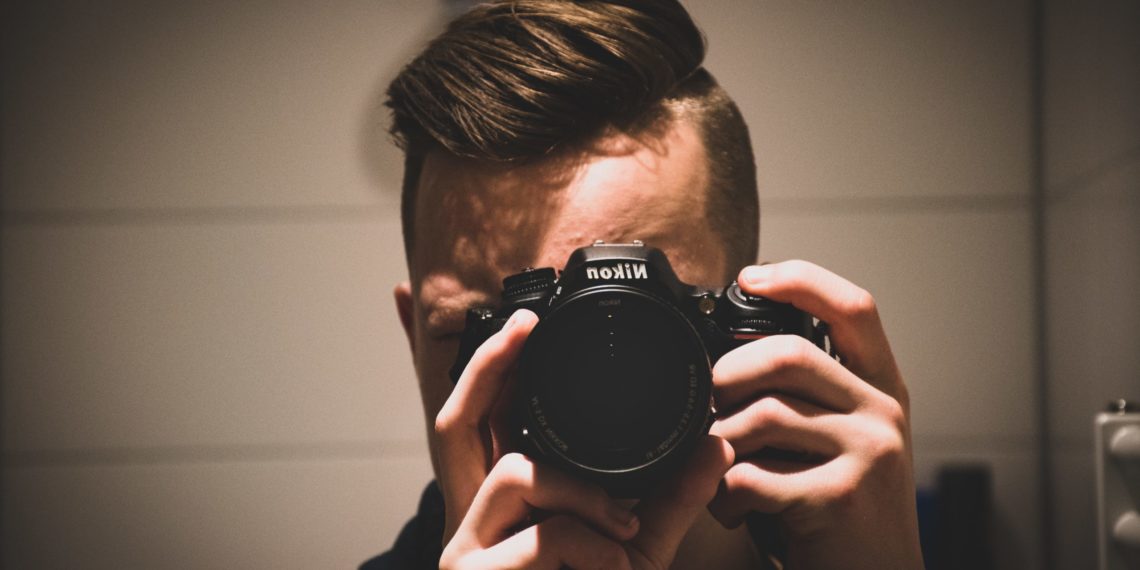



Discussion about this post